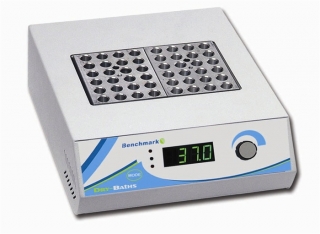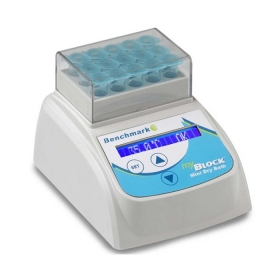Before the introduction of digital dry baths, laboratories relied on analog dry baths, also known as incubators or block heaters. These machines allowed users to heat their samples, but it was difficult to control the temperature of their samples. The temperature of the incubators was controlled by incremental knobs that the user could turn to change the temperature. This system made it very difficult to determine the actual temperature of the sample. It was necessary to use a thermometer in order to get an accurate temperature reading.
Luckily, the introduction of digital dry baths has removed the headache many users experienced with analog dry baths. Digital dry baths incorporate a microchip that provides the user with the ability to accurately control the temperature of the bath. These baths also have a digital screen that displays the temperature. The temperature can be adjusted by pressing the up and down buttons. Some of the baths use a knob to adjust the temperature.
But wait, there is more! In addition to transitioning to digital dry baths, there has been an increase in demand for smaller, lighter and more compact baths. This has resulted in a big shift towards manufacturers creating smaller and smaller laboratory equipment. Did you know that the tiniest digital dry bath weighs 3 lbs and can fit into the palm of your hand? The MyBlock Mini, manufactured by Benchmark Scientific is actually the smallest block dry bath in the world.Another exciting development in the laboratory bath market is the introduction of baths that are able to cool and heat samples. These baths have a cooling capacity of about -20 degrees Celsius. This type of bath is often used in microbiology applications where it is important to keep the molecular structures of the samples the same.
In molecular biology, biochemistry, genetics and cell biology, many researchers encounter the issue of needing to agitate samples while they are being heated. In the past, many researchers had to remove a sample from the dry bath, agitate it, and place it back in the bath. This unexpected change in temperature can damage the sample. In order to prevent damaging the sample, many companies have begun to manufacture lab baths that can heat and agitate at the same time. Some of these baths also have the ability to cool samples in addition to heating and agitating them.
What do you think of our post on dry baths?


Leave a Reply